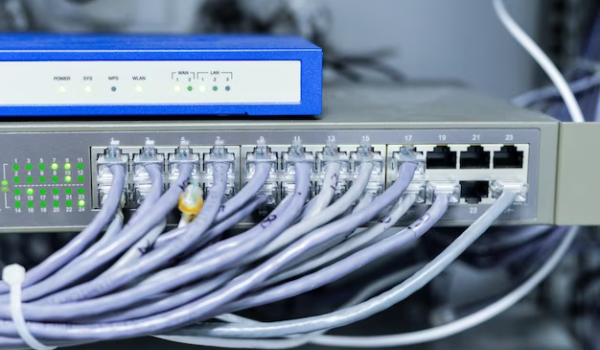In the realm of network management, efficiency and speed are paramount. When it comes to Cisco switches and preventing switching loops, there’s a feature that can significantly enhance your network’s performance: PortFast. In this article, we’ll delve into how to configure PortFast on your Cisco switch for faster port activation and improved network efficiency.
Understanding PortFast
Spanning-Tree Protocol (STP) is vital for loop prevention, but it can introduce delays, particularly for critical resources like servers. PortFast comes to the rescue by allowing designated ports to bypass the STP convergence process. This means that ports with PortFast enabled activate much faster, taking mere seconds rather than the typical 30-50 seconds during STP convergence.
Enabling PortFast
The process of enabling PortFast is straightforward. Here’s a step-by-step guide:
- Identify the interface you want to enable PortFast on. In this example, we’ll use interface Fa0/1.
- Access the switch’s configuration mode:
Switch# configure terminal
- Navigate to the desired interface:
Switch(config)# interface fa0/1
- Enable PortFast on the selected interface:
Switch(config-if)# spanning-tree portfast
With these simple commands, you’ve activated PortFast on the specified interface, ensuring rapid port activation when devices are connected.
A Practical Scenario
To illustrate PortFast in action, consider this scenario:
- You have a Cisco switch with PortFast enabled on Fa0/1;
- You connect PC0 to Fa0/1 and PC1 to Fa0/2.
In this scenario, Fa0/1 will activate within seconds, thanks to PortFast, while Fa0/2 will take the usual 30–50 seconds during STP convergence.
By leveraging PortFast, you can enhance network efficiency, reduce downtime, and optimize resource accessibility, making it a valuable tool in your network management arsenal.
Configuring PortFast on Cisco Switches
| Feature | PortFast |
|---|---|
| Activation Speed | Seconds, not minutes |
| Efficiency | Improved |
| Configuration | Simple and quick |
| Network Benefit | Reduced downtime |
In the realm of network management, efficiency and speed are paramount. When it comes to Cisco switches and preventing switching loops, there’s a feature that can significantly enhance your network’s performance: PortFast. In this article, we’ll delve into how to configure PortFast on your Cisco switch for faster port activation and improved network efficiency.

Video Explanation
To finally answer all your questions, we suggest you watch this video. Enjoy watching it!
Conclusion
In conclusion, configuring PortFast on Cisco switches is a valuable technique for improving network efficiency and reducing downtime. By designating specific ports as PortFast-enabled, you can ensure faster activation times for non-trunking interfaces, allowing users to access resources without delays caused by spanning-tree convergence. This feature is particularly useful for scenarios where the risk of switching loops is minimal.
We’ve explored the straightforward process of enabling PortFast on Cisco switches, emphasizing its simplicity and effectiveness. With just a few commands, you can significantly enhance your network’s performance and responsiveness.
Whether you’re managing a small office network or a large enterprise setup, understanding and implementing PortFast can lead to smoother operations and better user experiences. By following these steps and best practices, you can leverage PortFast to optimize your Cisco switch configurations and enjoy the benefits of reduced downtime and improved network responsiveness.
